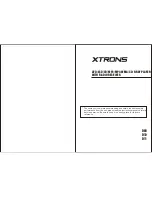
NAS-50HDE.GB.2-890-157-
11
(1)
1
GB
Items
Definition
Examples
DHCP
DHCP (Dynamic Host Configuration Protocol) is a
protocol that automatically allocates information such as
an IP address to a computer (client) which is temporarily
connected to the Internet. The DHCP server maintains
other parameters such as IP address for the gateway
server or DNS server, subnet mask, and the range of IP
addresses that can be provided to clients, and provides the
information to dial-up users.
When the client finishes accessing, the DHCP automatically
collects the addresses and allocates them to another
computer. The DHCP allows users to connect to the
Internet easily, even if they are not familiar with network
settings. Moreover, the DHCP allows the network
administrator to manage multiple clients easily.
Access point*
An access point is a device which relays electronic signals in
order to connect wireless communication devices (such as a
lap top PC) together to form a wireless LAN network.
SSID*
SSID (Service Set Identifier) is a name that identifies
the access point in an IEEE 802.11x series wireless LAN
network. It consists of a maximum of 32 alphanumeric
characters.
Security settings* Security settings prevent the use of files or peripheral
devices, or the interception of the contents of
communications by third parties. This unit can use WEP
(Wired Equivalent Privacy) for the wireless LAN network
security setting.
Network key*
The network key is a kind of password used for security
setting. The same network key will be needed for both the
wireless LAN router and the Ethernet/wireless LAN media
converter or the USB wireless LAN adaptor. It consists of a
maximum of 26 alphanumeric characters.
* For wireless LAN networks only.
















































